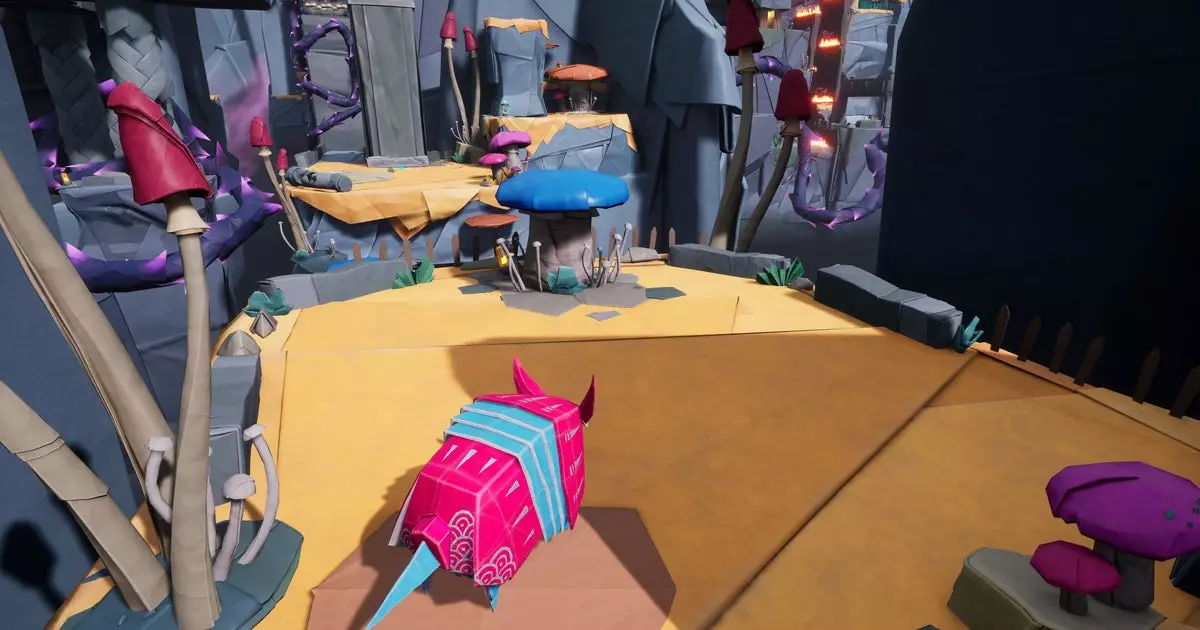In recent years, the intersection of digital gaming and traditional art forms has sparked a blend of admiration and irony. One notable example lies within the upcoming title, Hirogami. While it aims to celebrate paper-based creations through a narrative featuring fantastical, origami-like transformations, it prompts a critical examination of what it means to honor physical art in a digital medium. This article explores these contradictions, the thematic connections to environmental concerns, and the overall presentation of Hirogami.
Art in Conflict: Praise vs. Reality
At its core, Hirogami presents a world where a digital protagonist, Hiro, embodies the very essence of paper through creative gameplay mechanics centered around origami. The game touts its ambition to elevate the ancient Japanese art of folding paper, yet it raises an essential question: how can a digital game authentically venerate a physical medium? This internal conflict poses an ironic twist; by creating a digital representation of paper, it becomes part of the “blight” it seeks to eradicate.
As players navigate through a universe filled with “mind-warped inhabitants,” the notion of cleansing this digital world appears paradoxical. The irony lies not just in the medium itself but in the implications of “saving” a world that, by its nature, is an embodiment of artificiality. While Hirogami aims to pay homage to the natural beauty of paper art, it inadvertently showcases the very digital landscape that defines our contemporary existence, which often stands in juxtaposition to physical artistry.
Hirogami is presented as a platformer where players can morph into various paper-based forms, each designed to overcome challenges and explore an intricately crafted origami universe. Hiro’s transformations, from jumping like a lanky hero to rolling like an armadillo, offer a creative gameplay experience. The mechanics speak to a whimsical, childlike appreciation for physicality—a somber reminder of how fragile art truly is.
The game’s description encourages exploration and discovery, inviting gamers to unearth secrets hidden in the folds of the landscape. Each ability Hiro possesses allows players to tackle environmental puzzles, echoing the delicate balance of nature that paper and art strive to cherish. However, the absence of a deeper mechanic—such as a mini-game that simulates the actual folding process—could be viewed as a missed opportunity. Such an inclusion might have further bridged the gap between digital interaction and the physical practice of origami itself.
Accompanying Hirogami’s gameplay is a traditionally inspired instrumental soundtrack, likely meant to evoke a sense of nostalgia and connection to the culture of origami. This aspect of the game is critical, as music often heightens players’ immersion, yet it serves as another reminder of the complexities arising from the juxtaposition of analog and digital experiences. The lush art direction complements the soundtrack, inviting players to appreciate a visually stunning world despite its inherent contradictions.
Interestingly, Hirogami is being developed by a team at Bandai Namco Singapore, with Kakehashi Games overseeing its publication. This connection to well-known creators adds a level of credibility to the project, yet raises the question of how deeply the developers understand the nuances of the art form they seek to represent. Can a digital entity truly capture the tactile and communal essence of origami, traditionally shared among individuals, alongside the history and emotional weight of the craft?
A Reflection on Digital vs. Print
As noted in the original critique, the era of “print is dead” has shifted perceptions of artistic media dramatically. This narrative has fostered an environment where digital representations dominate market landscapes while simultaneously overshadowing traditional forms of expression. Hirogami touches upon this idea through the lens of environmental preservation, subtly suggesting the importance of safeguarding fragile creations, whether made from paper or code.
Ultimately, Hirogami offers a captivating visual and auditory journey. Yet, it also poses poignant questions about authenticity and representation, urging players—and creators alike—to reflect on the essence of art in the digital age. As we approach its release in 2025, the industry will undoubtedly continue to grapple with these ideas, making Hirogami not only a game to play but also a contemplation of a world where the boundaries of creativity continue to blur.


Leave a Reply